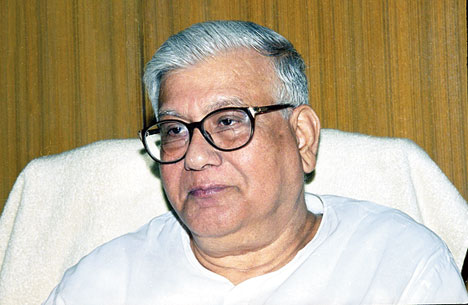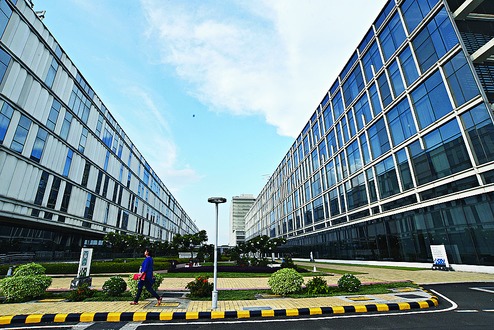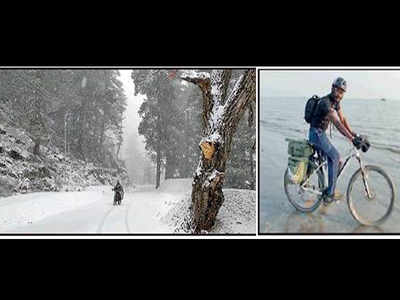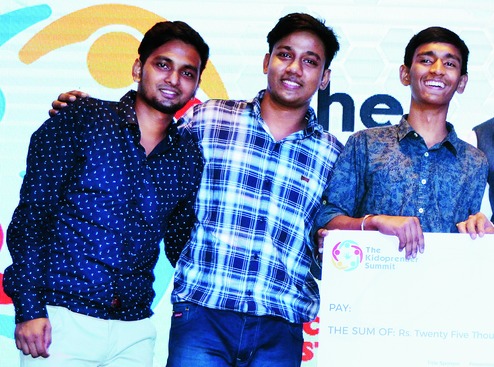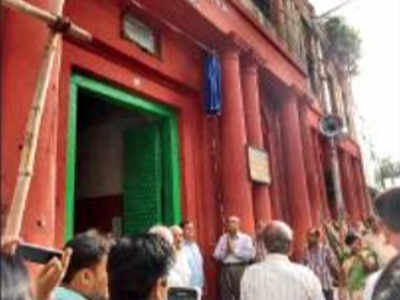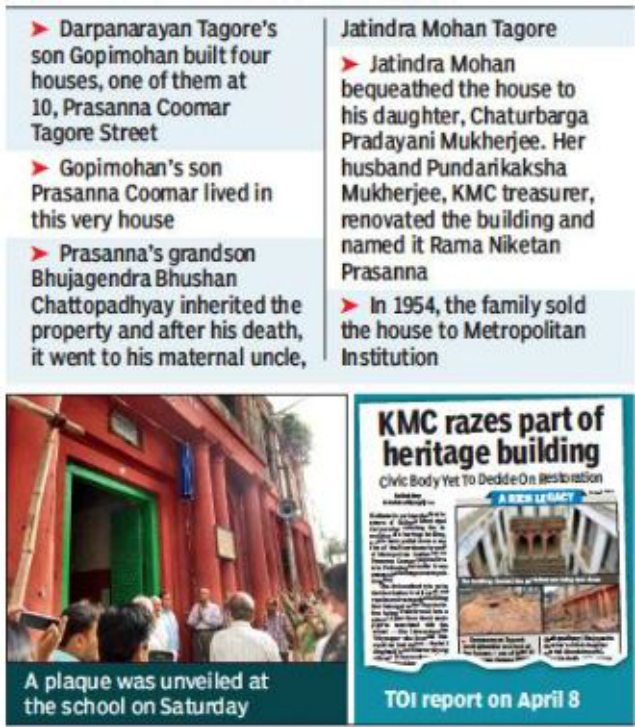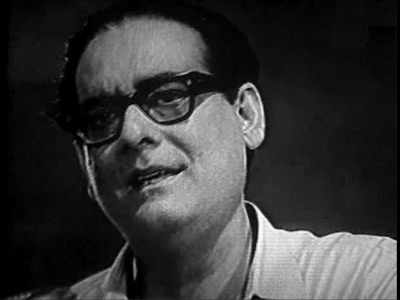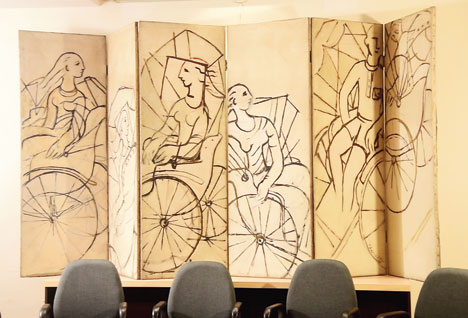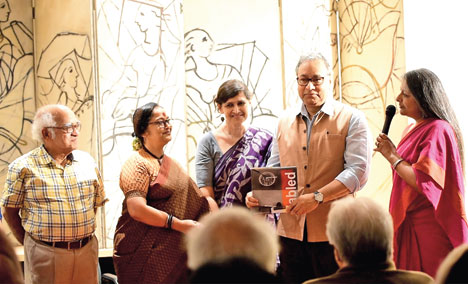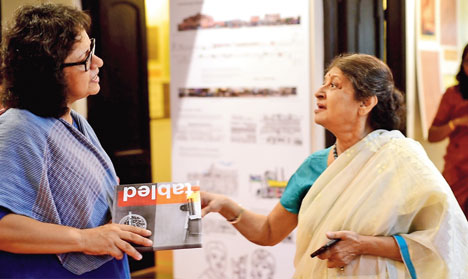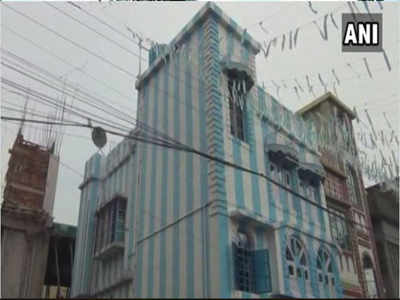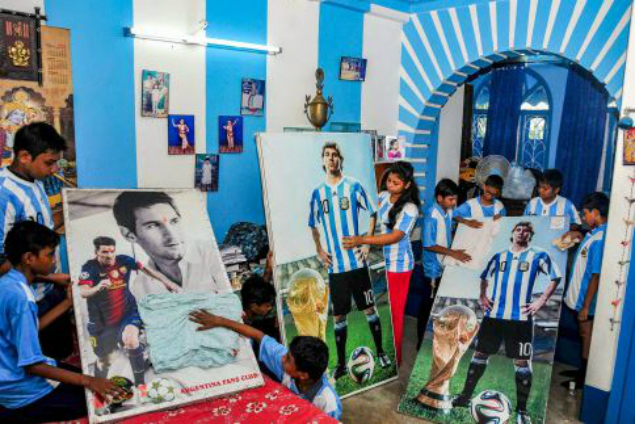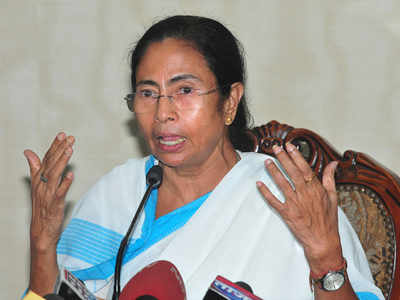In memoriam: Satya Sadhan Chakraborty(1933 – 2018) FE Block
Satya Sadhan Chakraborty, former higher education minister in the Left Front government, passed away at his FE Block residence on Saturday morning. He was 85.
According to family sources, he suffered a massive cardiac arrest at 10.30am. He leaves behind his only daughter Sharmistha Bhattacharjee. “I stay in Delhi but was spending a lot of time in Calcutta to be with Baba and was there with him continually since May,” she said. Chakraborty’s wife Shukla had died four years ago.
Chakraborty hailed from Comilla, now in Bangladesh, and came to Calcutta for higher studies after Partition. He did an MA in political science from Calcutta University.
He became an MP defeating Bhola Sen in the Calcutta South constituency in 1980 but was defeated by the same rival in 1984. “It was one of the 16 seats we lost in the Congress wave after Indira Gandhi was killed,” recalled colleague and Salt Lake neighbour Rabin Deb. He also worked in the education cell of the West Bengal College and University teachers’ Association (WBCUTA) and became its general secretary.
He was elected thrice from Chakdah to the Assembly. After his first victory in 1991, he became the higher education minister in Jyoti Basu’s cabinet, a post he held till 2006 even after Buddhadeb Bhattacharjee succeeded Basu as chief minister in 2000.
“Baba had suffered a slipped disc when he was a minister. That led to a problem in movement in later life. For the last few years, he was wheelchair-bound,” recalls Sharmistha, who remembers her father as a “very positive thinking individual”.
Deb, a resident of FD Block, knew Chakraborty as a teacher at Vidyasagar College from the time he was a student himself in a different college. Chakraborty would later retire as head of the political science department there. “But he caught my eye with his impromptu Bengali translation of (Marxist leader) B.T. Ranadive’s speech at the Lenin centenary celebration at Eden Gardens.”
Chakraborty, Deb recalls, was a large-hearted man and a good orator. “Such was his way with words that he could say tough things couched in high civility, leaving the Opposition at a loss for response on the Assembly floor. He had come up the hard way. He worked on the factory floor to support his family even as he studied in the evening course.”
In those days, they lived in Dum Dum. Chakraborty shifted to Salt Lake in 1992.
During his own stint as Ballygunge MLA, Deb recalls needing money to build premises for Charuchandra Evening College.
“Classes of the college were being held in a dilapidated school building. As per rules, the government could not give money to buy land. But we found a way. I raised the matter as a supplementary question in the Assembly. As minister, he assured me help to construct the building. Thus we could get around the legal hurdle. The building now stands as Naba Ballygunge Balika Uchcha Mahavidyalaya beside Kasba police station on the Rashbehari connector,” he smiles.
Chakraborty, he points out, also played key roles in the party’s Cuba and Nicaragua standing committees. “He was also the Bengal representative in an Afro Asian Peace Conference which was attended by Frontier Gandhi and Sheikh Hasina.”
source: http://www.telegraphindia.com / The Telegraph,Calcutta,India / Home> Calcutta / by Special Correspondent / June 22nd, 2018
